Save
You have reached your maximum number of saved items.
Remove items from your saved list to add more.
A cliche about Japan is its obsession with perfection – and Tokyo in high summer truly perfects the urban heat island effect, as 2200 square kilometres of concrete, asphalt and glass reflect and absorb the rays of a searing sun.
One way to beat the heat is to do as the locals do and head for the hills – or in this case, to Kamikochi in Honshu’s Hida Mountains, about 250 kilometres west of Tokyo.
Officially designated a “Special Place of Scenic Beauty”, Kamikochi – “the place where the gods descend” – is one of Japan’s natural jewels, an outdoors wonderland that draws comparisons to California’s famed Yosemite, in that it’s a glacial valley with a relatively flat floor (about 1500 metres above sea level) surrounded by majestic, rocky peaks.
Domestic visitors flock here in autumn to see the blaze of red, orange and yellow as the trees on the lower slopes change colour, and during the summer “green” season to enjoy the cool mountain air and escape the wilting heat of Japan’s megalopolises.
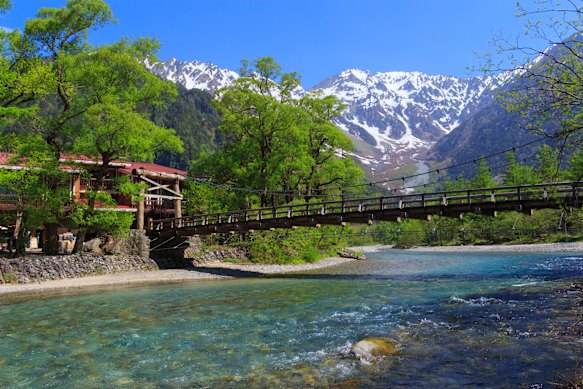 Kappa Bridge in Kamikochi.iStock
Kappa Bridge in Kamikochi.iStock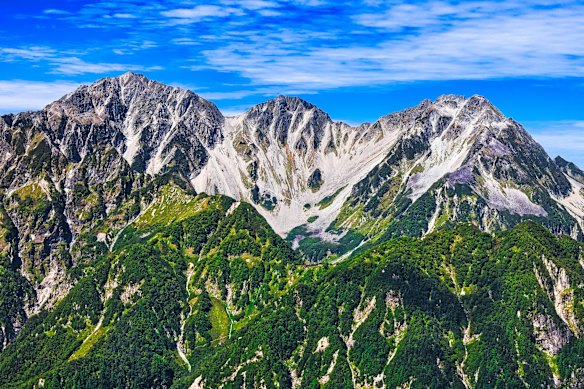 Japan’s spectacular Hotaka mountain range.iStock
Japan’s spectacular Hotaka mountain range.iStock
My wife and I do the same, leaving behind a 35-degree urban oven after catching the limited express Azusa train from Tokyo’s Shinjuku station.
Less than three hours later, we arrive in Matsumoto, a charming regional city with a beautifully preserved 16th-century castle, delicious soba noodles and a modern art museum featuring the work of Yayoi “Dot Lady” Kusama, who grew up here.
After an overnight stay, we pick up our hire car for the one-hour drive to Kamikochi. There’s only one narrow road into the valley, which park authorities wisely decided to close to private vehicles in 1975, so we park at nearby Sawando bus terminal and catch one of the shuttles that depart for Kamikochi roughly every half hour.
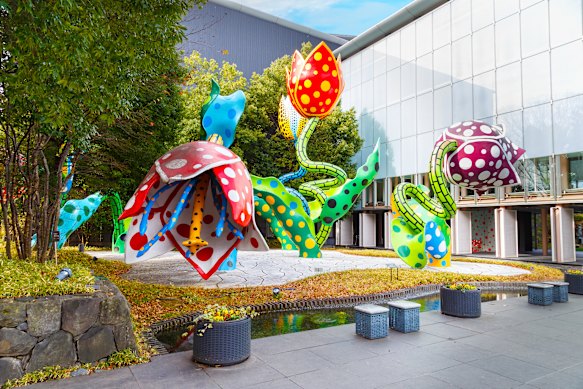 Art in Matsumoto.iStock
Art in Matsumoto.iStock
Thirty minutes later, when our bus emerges from the Kama Tunnel, the valley of Kamikochi reveals itself. Taking in the greens of the lower mountains transitioning to the grey and brown of sheer mountain faces, the blue skies, the puffy white clouds, all reflecting off Taisho Pond – there’s something of a Shangri-La, hidden valley vibe to the place.
Or there would be, if not for the hundreds of tourists milling about as we pull into the bus terminal with its attendant information centre, souvenir stores and cafeteria.
Things are just as hectic at nearby Kappa Bridge, which spans the opal-blue waters of the Asuza River. Day trippers queue for the obligatory selfie, with the soaring 3190-metre peak of Hotakadake – Japan’s third-highest mountain – as a backdrop.
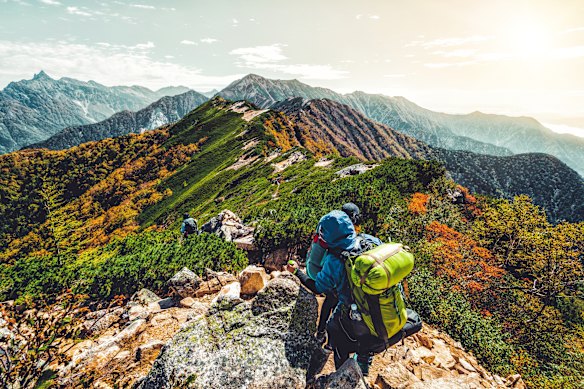 Hikers on a ridgetop.iStock
Hikers on a ridgetop.iStock
But we’ve done our research and have a plan to escape the crowds. Kamikochi features a network of wide, easy-to-amble trails along the valley floor, as well as more challenging tracks that lead to the higher peaks, nestled within which is a network of mountain huts and lodges.
By climbing higher up the valley, the crowds should thin out, and we’ll find a bit more of that natural solitude we’re seeking. So we set off on the five-hour, 12.5-kilometre hike to Yarisawa Lodge, our destination for the night.
We follow the Asuza River through lush, sun-dappled forests and past moss-covered rocks, bright orange fungi and stately trees that make us feel as if we’re walking through a Studio Ghibli anime come to life. Passing Tokusawa Lodge, we come across a troupe of nonchalant Japanese macaques (aka snow monkeys) on the path, but there is no sign of the black bears that supposedly also call the valley home.
When we stop for a rest at Yokoo Sanso Lodge, about 10 kilometres from Kappa Bridge, many of our fellow hikers peel off across a bridge and head up the trails leading to the popular Karasawa Cirque. We carry on north, and our path narrows into a single track winding up through the verdant forest.
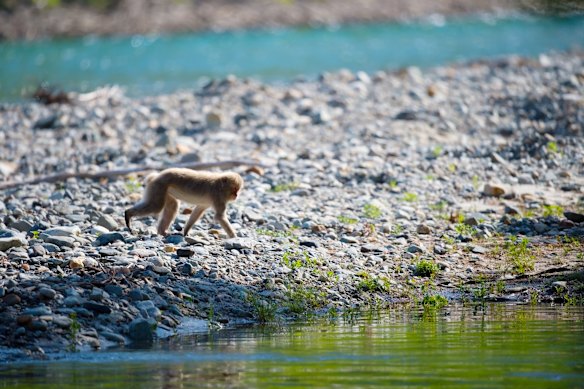 A macaque, or snow monkey, in Kamikochi.iStock
A macaque, or snow monkey, in Kamikochi.iStock
From time to time, our progress is slowed by clusters of hardy pensioners, plodding along at their own pace, or groups of high school students getting an outdoor education beneath their enormous packs.
With all that gear, they must be camping out. We, on the other hand, have opted to travel light and stay in the relative luxury of Yarisawa Lodge, which includes three square meals and bedding. We’ve left most of our luggage in the hire car and distilled the necessities we need for our overnight stay – snacks, water, rain gear – into two small daypacks.
We chose Yarisawa because it is one of the few mountain huts in Kamikochi that you can book ahead online. Most can only be booked via telephone, which would have been a stretch given our utter lack of Japanese.
Having said that, there is plenty of spare room when we arrive just after 5pm. By Japanese hiking standards, that’s late – the dinner service has already started, and we, the only gaijin (foreign) guests, are the last to arrive. We dump our gear and head to the dining room for a filling meal of karaage chicken, rice, pumpkin, miso soup, salad and a cold Asahi beer from the vending machine in the foyer.
Yarisawa is more of a lodge than a simple hut, and this is the case with most of the high mountain accommodation in Japan. The layout over two floors is simple and spartan – it can sleep up to 150 people on tatami mats, and there are even basic bathing facilities to hot-soak away the strain of the day.
Fed, watered and washed, we exchange pleasantries in broken Japlish with our roommates, a thirty-something couple from Kanazawa, and hit the futons just before lights-out at 8pm. Why so early? Because our hot breakfast will be served at the ungodly hour of 5am. (No wonder Japan is known as “the land of the rising sun”.)
After breakfast, most of our fellow guests continue up the trail for the four-hour climb to Yarigatake. At 3180 metres, it’s Japan’s fifth-highest mountain, famed for its spear-like tip thrusting to the sky like a north Asian Matterhorn. There are two large huts near the base of the peak, and if we had the time (and let’s be honest, the energy) it would be a tempting proposition to climb.
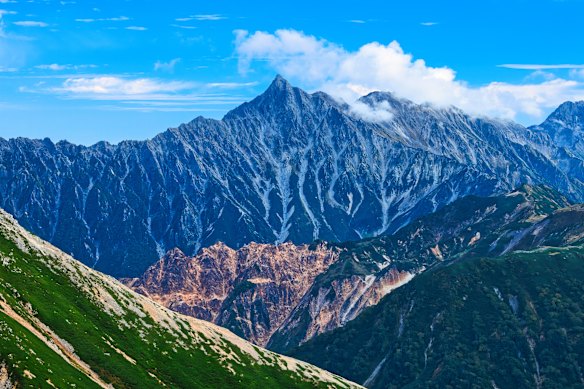 The spectacular Yarigatake, or Mount Yari.iStock
The spectacular Yarigatake, or Mount Yari.iStock
Instead, we retrace our steps along the river valley back to Yokoo Sanso, where we take a 40-minute side trip to Yarimidai lookout, midway up Mount Chogotake. Here, we take in the views of Yarigatake and the Hotakadake range, and eat a tasty lunch prepared by the cooks back at Yarisawa Lodge – rice, egg, lotus root and fish, all neatly wrapped up in bamboo bark.
By the time we rejoin the trail to Kappa Bridge and the bus terminal, the morning’s humidity turns into a barely perceptible smattering of precipitation. At these first atoms of moisture, other wayfarers immediately pull over and hurriedly don snazzy rainwear and stretch elasticated, waterproof covers over their packs.
Related Article
Japanese hikers tend to be gear junkies – it’s not uncommon to see them wearing climbing helmets and knee-high gaiters on the most benign lower trails, as well as the ubiquitous small bells to warn off bears – so I put this down to the need to indulge in some trekker cosplay to justify the expense of all that fancy kit.
I continue smugly apace, enjoying the gentle pock-pock-pock of drizzle on my hat … until the heavens open up, the rain streams down, and I scramble for my jacket and the pack cover that is buried somewhere in the depths of my rucksack.
Oh, well. We came here to escape the city heat, and getting soaked in a sudden mountain rainstorm is a perfect way to tick that box.
The details
Train + bus
The limited express Azusa train service departs regularly for Matsumoto from Tokyo’s Shinjuku station. Seats for the 2½-hour journey start from ¥6620 ($66) and must be reserved beforehand. Make sure you pick up a beautifully wrapped ekiben railway bento box for the trip from one of the many stalls in Shinjuku station. See jreast.co.jp
From Matsumoto, Kamikochi is about an hour by hire car, or 90 minutes by local train and bus.
Stay
Yarisawa Lodge is one of the few mountain huts in Kamikochi that can be booked online. A one-night stay with three meals (including lunch box) costs ¥15,500 ($154) a person. See yarigatake.co.jp
More
kamikochi.org
The writer travelled at his own expense.

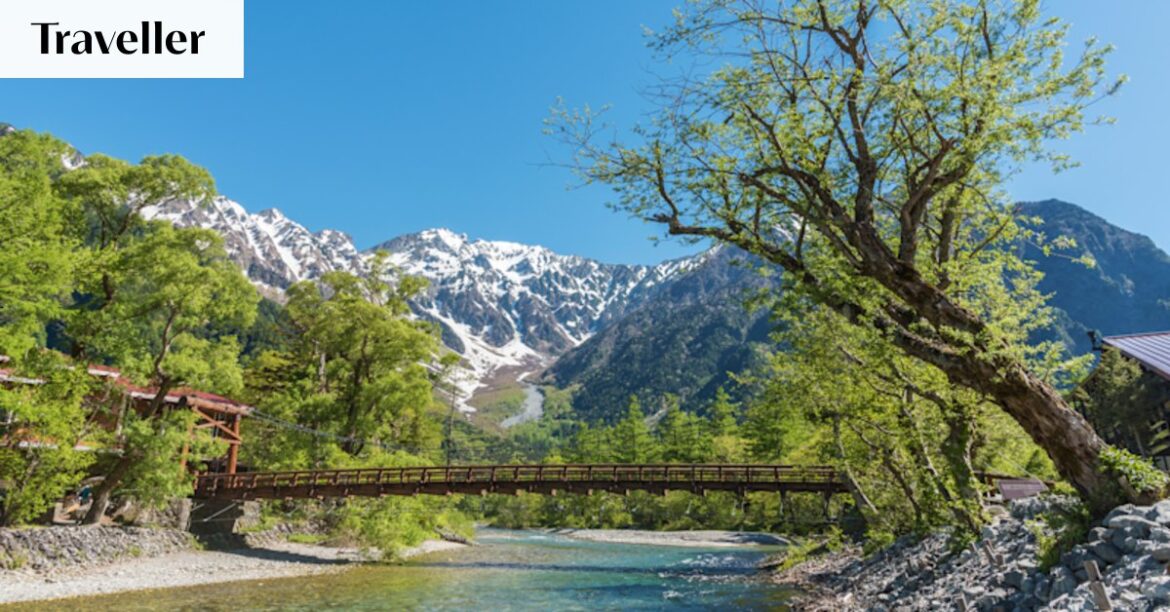
AloJapan.com